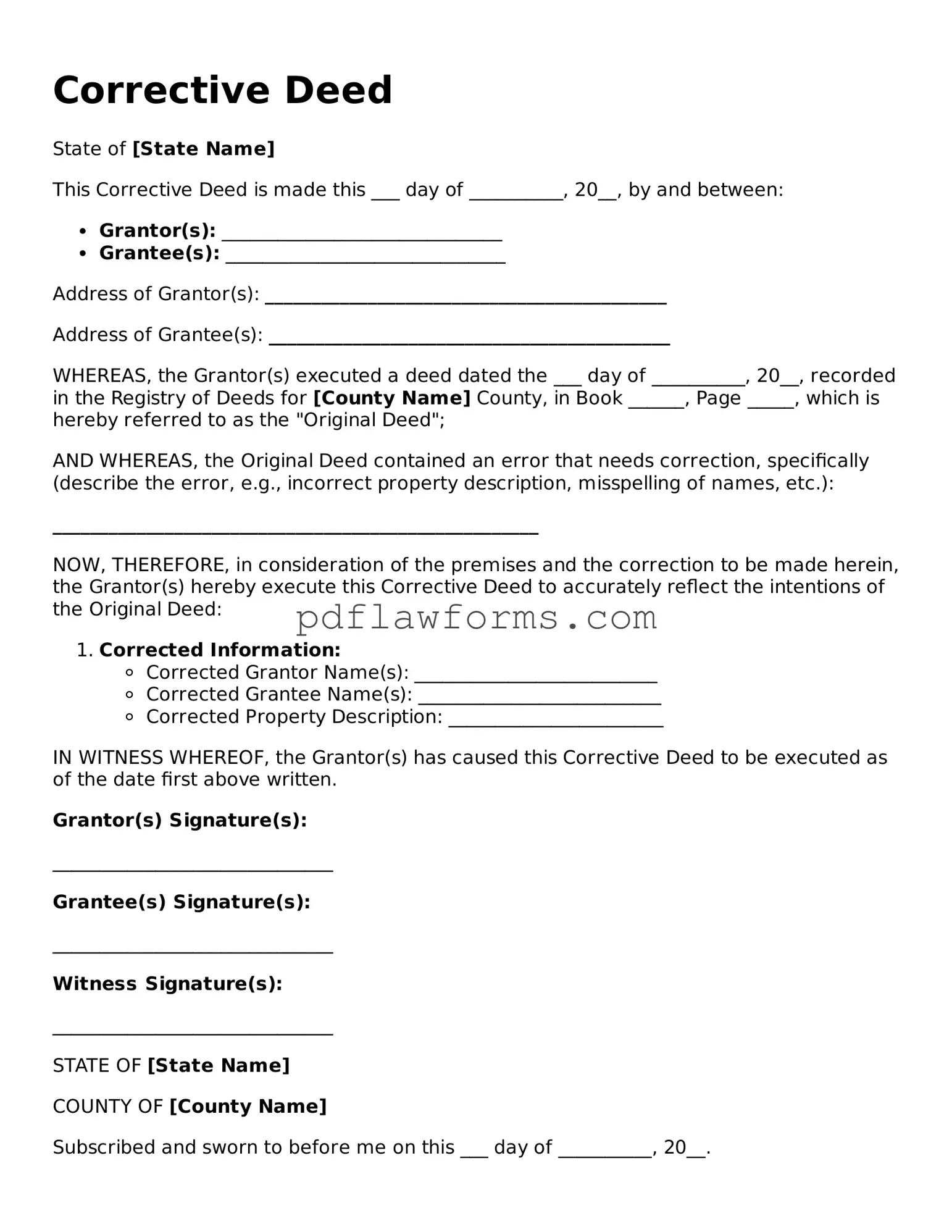When filling out the Corrective Deed form, individuals often encounter several common mistakes that can lead to complications. One frequent error is the omission of essential details. It is crucial to include the names of all parties involved, as well as accurate property descriptions. Missing information can delay processing and may require additional documentation.
Another common mistake is failing to use the correct legal terminology. Although it may seem minor, using incorrect terms can result in misunderstandings or disputes later. It is important to ensure that the language used aligns with legal standards to avoid ambiguity.
Many people also overlook the need for signatures. All parties listed on the deed must sign the document. Failing to obtain necessary signatures can invalidate the deed. In some cases, witnesses or notarization may also be required, depending on state laws.
Inaccurate property descriptions pose another significant issue. A Corrective Deed must include a precise description of the property being corrected. Errors in the legal description can lead to confusion about property boundaries or ownership, potentially resulting in legal disputes.
Some individuals forget to date the document. While it may seem trivial, dating the Corrective Deed is vital for establishing the timeline of ownership. Without a date, it may be difficult to determine when the correction took effect.
Another mistake involves not following state-specific requirements. Each state may have unique rules regarding the Corrective Deed process. Failing to adhere to these regulations can cause delays or rejection of the form.
People sometimes neglect to review the entire document before submission. Errors can easily go unnoticed, leading to complications later. A thorough review helps catch mistakes and ensures that the form is complete and accurate.
Additionally, individuals may not retain copies of the completed form. Keeping a copy for personal records is essential. This documentation can serve as proof of the correction and may be needed for future reference.
Lastly, some individuals submit the form without understanding its implications. It is advisable to fully comprehend the purpose and effects of a Corrective Deed. Lack of understanding can lead to unintended consequences that may affect property ownership.
